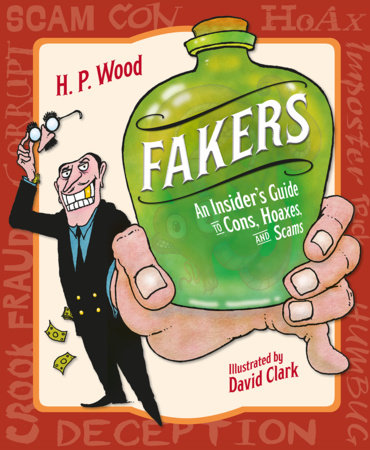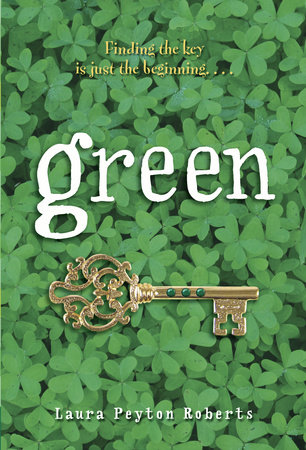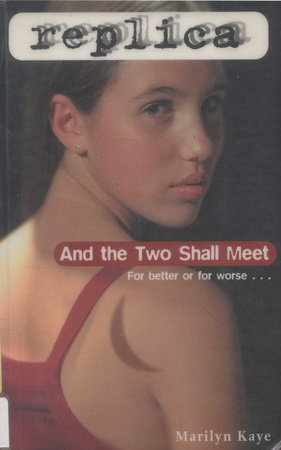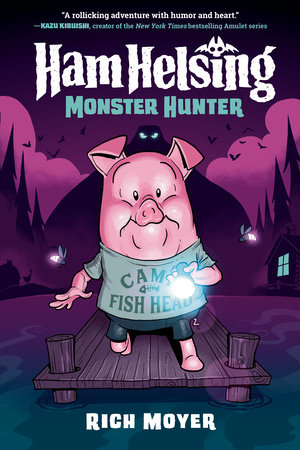

Fakers
By H. P. Wood
Illustrated by David Clark
By H. P. Wood
Illustrated by David Clark
Category: Children's Nonfiction | Children's Middle Grade Books

-
$18.99
Oct 02, 2018 | ISBN 9781580897433 | Middle Grade (10 and up)
Buy the Hardcover:
YOU MAY ALSO LIKE

Winnie Zeng Unleashes a Legend

Trailblazers: Amelia Earhart

Katie Kazoo, Switcheroo: Books 1 and 2

Green

And the Two Shall Meet (Replica #6)

Ham Helsing #2: Monster Hunter
Praise
In this lively look at the history of human trickery, Wood takes readers on a tour of cons, frauds, hoaxes, impersonations, and scams. The swindle is as old as history. The shell game, once called cups and balls, originated in ancient Rome. One example of a newer type of fakery, the “long con,” is the pyramid scheme, and Wood recounts the scams used by two of its most infamous practitioners, Carlo Ponzi and Bernie Madoff. No book about fakery would be complete without a discussion of P.T. Barnum’s many famous humbugs. Wood also reveals the tricks behind such carnival games as the ring toss, ball toss, and guessing games. Scientists have fallen prey to or helped perpetrate such hoaxes as the Rabbit Woman, the Lying Stones, and the Piltdown Man, but a long time passed before skeptical scientists were convinced the platypus was not a hoax. Deceptive practices in medicine have undoubtedly caused many injuries and deaths, but Wood recounts one medical hoax that saved dozens of Italian Jews when doctors in a Rome hospital convinced Nazis the Jews were afflicted with a dangerously infectious disease called Syndrome K and better kept in quarantine. These and more are all covered in lively prose that’s delivered with a healthy sense of irony. Clark’s full-color cartoons match Wood’s tone and are augmented by archival illustrations and photographs. A delightfully revealing look at scammers and their scams.
—Kirkus Reviews
In nine topical chapters, this volume describes the ways in which people have swindled one another on the street, in their personal relationships, and in the media. Featuring anecdotes ranging from hilarious to disturbing, the book covers quite a lot of territory, from the 18th-century Rabbit Woman of Godalming to contemporary issues with fake news and Internet hoaxes. Although the text seems somewhat dense at first glance, readers will soon be fascinated with the mind-boggling stories of a wide variety of cons, which are written in a style that deftly balances incredulity with seriousness when sharing the bizarre facts and takeaways from each situation. Scattered throughout are short spotlight stories, and frequent footnotes serve to inform and amuse readers. Visual elements include contemporary photos, historical images, and Clark’s colorful, cartoony drawings; back matter includes ample suggestions for further reading, arranged by chapter topic. VERDICT This engrossing read is a solid choice for medium to large nonfiction collections.
—School Library Journal
In a world where tricksters are always in the news, even as the word fake is bandied about indiscriminately, a book exposing cons and making young readers aware of how to approach schemes is essential. Luckily, Wood’s nonfiction title is also an entertaining read, with chapters divided up in ways that separate and link everything from Ponzi schemes to spoon benders to mass-media hoaxes. Any type of deceptive con one can think of is included. Want to know about shell games? It’s covered. War tricks like the Trojan horse? It’s here. Cartoonlike pictures emphasize the fun in funny business, slyly featuring everything from sleight-of-hand hieroglyphs to chunky, pizza-eating rats. Extensive chapter notes and resources, as well as a long index, lend the work gravitas. As the author points out, even computer-savvy young people are easily deceived, and she wants readers to not be “one of the guys and gals getting gotten.” If they take this book as a guide, they should have a head start in preparedness.—Booklist
21 Books You’ve Been Meaning to Read
Just for joining you’ll get personalized recommendations on your dashboard daily and features only for members.
Find Out More Join Now Sign In











